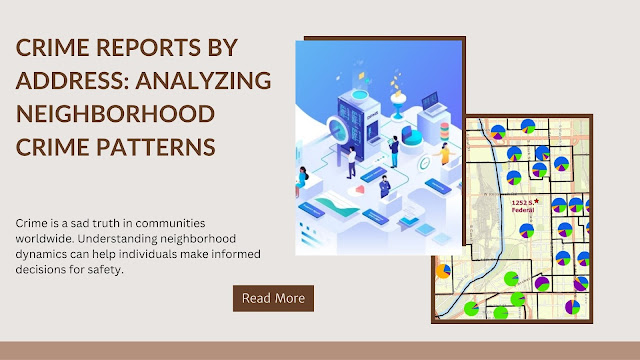Crime Reports By Address: Analyzing Neighborhood Crime Patterns
Crime is a sad truth in communities worldwide. Understanding neighborhood dynamics can help individuals make informed decisions for safety.
Crime reports by address are now a useful tool for examining local crime trends because of the development of technology and the availability of data. This blog examines the value of crime records broken down by address and how they help with demographic research and neighborhood safety.
Importance of Crime Reports for Neighborhood Analysis: Crime reports by address play a vital role in analyzing neighborhood demographics and assessing the safety of a particular area. By studying crime trends and patterns, researchers, policymakers, and community members can gain valuable insights into the following:
a) Identifying High-Crime Areas: Crime reports allow individuals to identify areas with higher crime rates, helping them make informed decisions about where to live, work, or visit. This information is particularly important for families, businesses, and investors who prioritize safety.
b) Understanding Crime Types: Crime reports provide detailed information about the types of crimes prevalent in a specific neighborhood. This knowledge helps authorities and community organizations allocate resources more effectively, develop targeted crime prevention strategies, and implement appropriate law enforcement measures.
c) Demographic Analysis: Crime reports by address contribute to a demographic analysis by highlighting correlations between crime rates and various factors such as population density, socio-economic status, education levels, and more. Understanding these relationships can aid in identifying the root causes of crime and developing proactive solutions.
Empowering Communities: Access to crime reports by address empowers individuals and communities to take an active role in enhancing their safety. Armed with knowledge about crime patterns in their neighborhoods, community members can:
a) Promote Awareness: Residents can educate themselves and others about prevalent crimes, modus operandi, and preventive measures. This knowledge fosters a sense of community vigilance and encourages reporting of suspicious activities.
b) Collaborate with Law Enforcement: Community members can collaborate with local law enforcement agencies by sharing information from crime reports. This partnership strengthens the fight against crime and enhances overall neighborhood security.
c) Advocate for Change: Armed with data-driven evidence from crime reports, community members can advocate for policy changes, increased police presence, or improved security measures. Their collective voices can drive positive transformations within their neighborhoods.
Limitations and Considerations: While crime reports by address offer valuable insights, it is essential to consider some limitations:
a) Underreporting Bias: Crime reports may not fully reflect the true extent of criminal activity in a neighborhood, as many crimes go unreported. Factors such as fear, distrust, and cultural barriers can contribute to underreporting bias.
b) Data Accuracy: It is crucial to consider the accuracy and reliability of crime reports. Errors or inconsistencies in recording and data collection processes can affect the overall validity of the information.
c) Contextual Understanding: Neighborhood crime report by address should be interpreted in conjunction with other socioeconomic, cultural, and environmental factors. Isolating crime statistics without considering broader contextual factors may lead to incomplete conclusions.
Conclusion:
Crime reports by address are invaluable tools for analyzing neighborhood crime patterns, understanding demographics, and enhancing community safety. By utilizing these reports, individuals and communities can make informed decisions, collaborate with law enforcement, and advocate for change. While crime reports offer valuable insights, it is essential to consider their limitations and interpret the data within the broader context of social, economic, and environmental factors.




Comments
Post a Comment